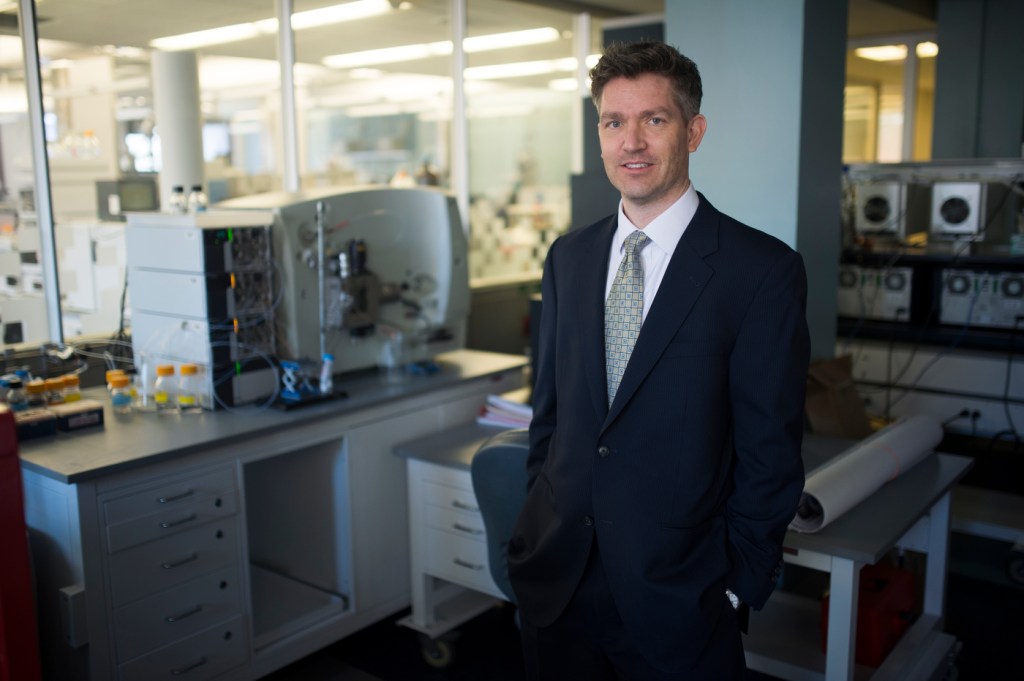Neutralizing HIV function

Northeastern researchers have played a key role in studying how antibodies that neutralize HIV function are structured, a further step in ongoing global efforts by scientists to develop a vaccine for the pandemic virus that causes AIDS.
Working under the leadership of immunologist Ellis Reinherz of Dana-Farber Cancer Institute, Northeastern’s John R. Engen, a professor of chemistry and chemical biology in the College of Science, used mass spectrometry to analyze the 2F5 antibody, one of several broadly neutralizing anti-HIV antibodies that prevent the development of AIDS.
Broadly neutralizing antibodies are extremely rare when found naturally. In many cases, antibodies raised in the lab may interact but are unable to neutralize.
The researchers, whose results were published this month in the journal Nature Structural & Molecular Biology, probed this problem.
“The recognition by this antibody is complicated,” said Engen, describing his work to analyze the 2F5 antibody interaction with the HIV protein gp41. “2F5 binds to a portion of gp41, a specific protein in the HIV outer lipid wall, then 2F5 physically moves. That movement is quite important for the final recognition process and to create an artificial antibody that does that movement will be quite tricky.”
The paper examines the structure and operation of antibodies that would play an essential role in an eventual HIV or AIDS vaccine. The research was financed and supervised by the Dana-Farber Cancer Institute, the National Institutes of Health and the Collaboration for AIDS Vaccine Discovery, which is funded by the Bill and Melinda Gates Foundation.
Engen said the work included some of the most difficult and rewarding projects he has been involved in in recent years.
“My lab at Northeastern has been doing this mass spectrometry method to look at protein conformation for a long time, and this is one of the more exciting projects because it has to do with looking at diseases and how they work,” Engen said.
Engen said Northeastern’s role was part of a larger interdisciplinary team’s efforts, and it was an important contribution that is uniquely suited to Northeastern, given the well established bioanalytical expertise within the Barnett Institute of Chemical and Biological Analysis and the Department of Chemistry and Chemical Biology.
“We’re really excited to work on collaborative projects like this in which different expertise is brought to bear on a single problem of high importance,” Engen said.





